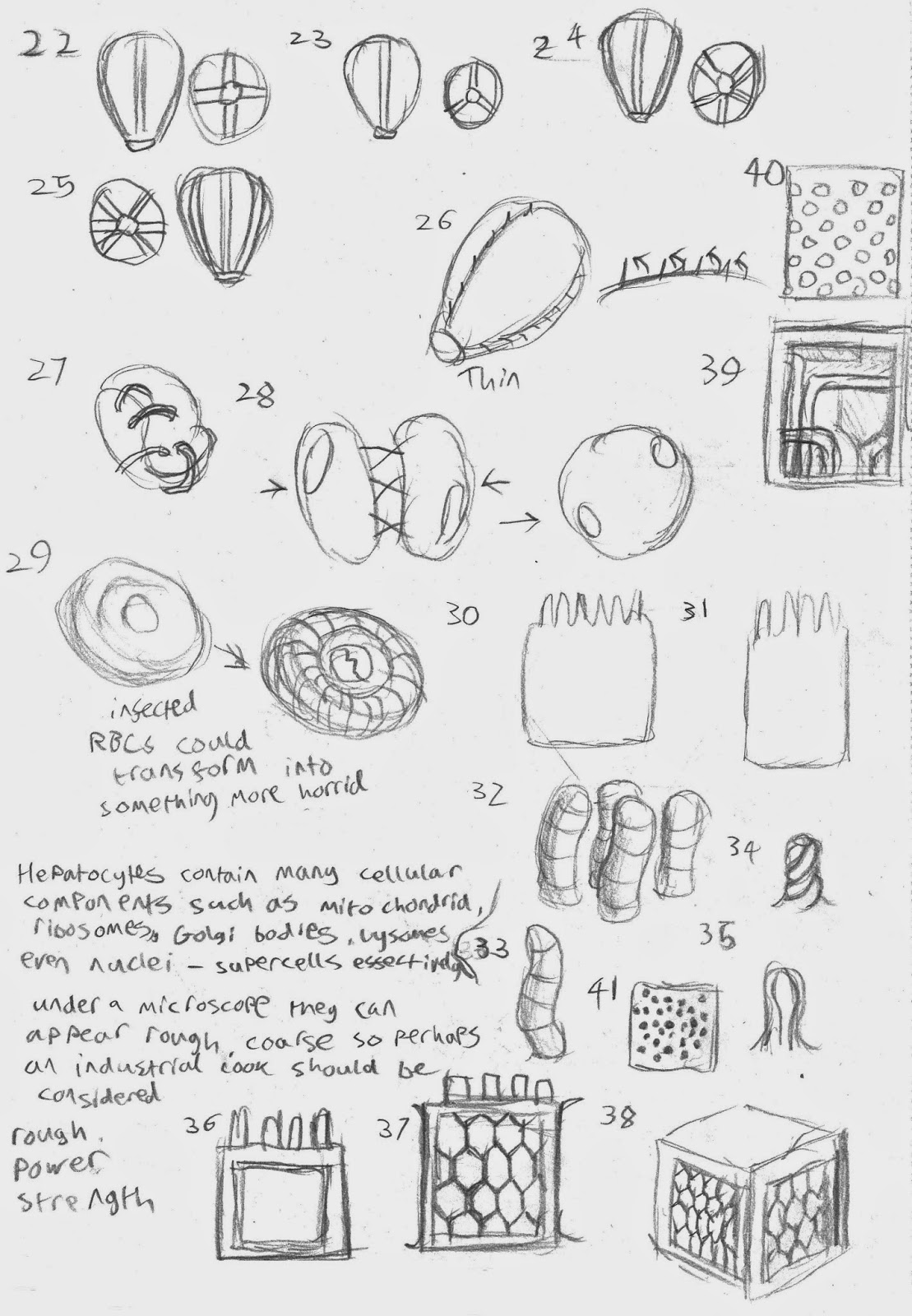This afternoon was spent on brainstorming ideas for both object designs and a few storyboard ideas. I worked this out to be useful as the process in how the merozoite entered the blood cell proved pivotal to the merozoite's design (the aspects of which I have considered also using perhaps for the sporozoite). The hepatocyte - the liver cell - I enjoyed looking into. It's anatomy is unique amongst most cells in that it has large amounts of everything - Golgi organelles, mitochondria, endoplasmic reticulum, it's even common for them to posess two nuclei according to the University of Southern Illonois (King, 2011) - so designing one I had this image of them in the world of the animation being something industrial, heavy-duty and tough. A super-cell of some kind, which makes sense why sporozoites target them for the production of merozoites.


I also looked back at potential environments. The liver region could be quite industrial, with tubes and cables connecting between hepatocytes, but should all the animation happen within the liver or do I include a more nondescript region of the body for the red blood cell phase? This is what I am considering for the moment.
These are an extra set of thumbnails that were to go in-line with the previous set of thumbnails. With these I was exploring designs for the sporozoite (which woudl infect a hepatocyte), ookinate (the intermediate between the combining gametes), the gametes themselves and the schizont (the structure a merozoite turns into in order to reproduce). They may need a little refinement.
Speaking with Jackie I have considered the mechanical aesthetic of the different stages of malaria could look aggresive, brutal and hostile while the body cells have a more neutral maybe postmodern aesthetic (hence one or two ideas of the merozoite using spikes or barbed hooks to latch itself on to and enter a red blood cell), along with a passing idea that infected cells could themselves become more nasty-looking as malaria consumes them from the inside.
Bibliography
- King, D. 2011; GI Cells; Southern Illonois School of Medicine; available at http://www.siumed.edu/~dking2/erg/gicells.htm (last accessed 25th February 2015)




No comments:
Post a Comment